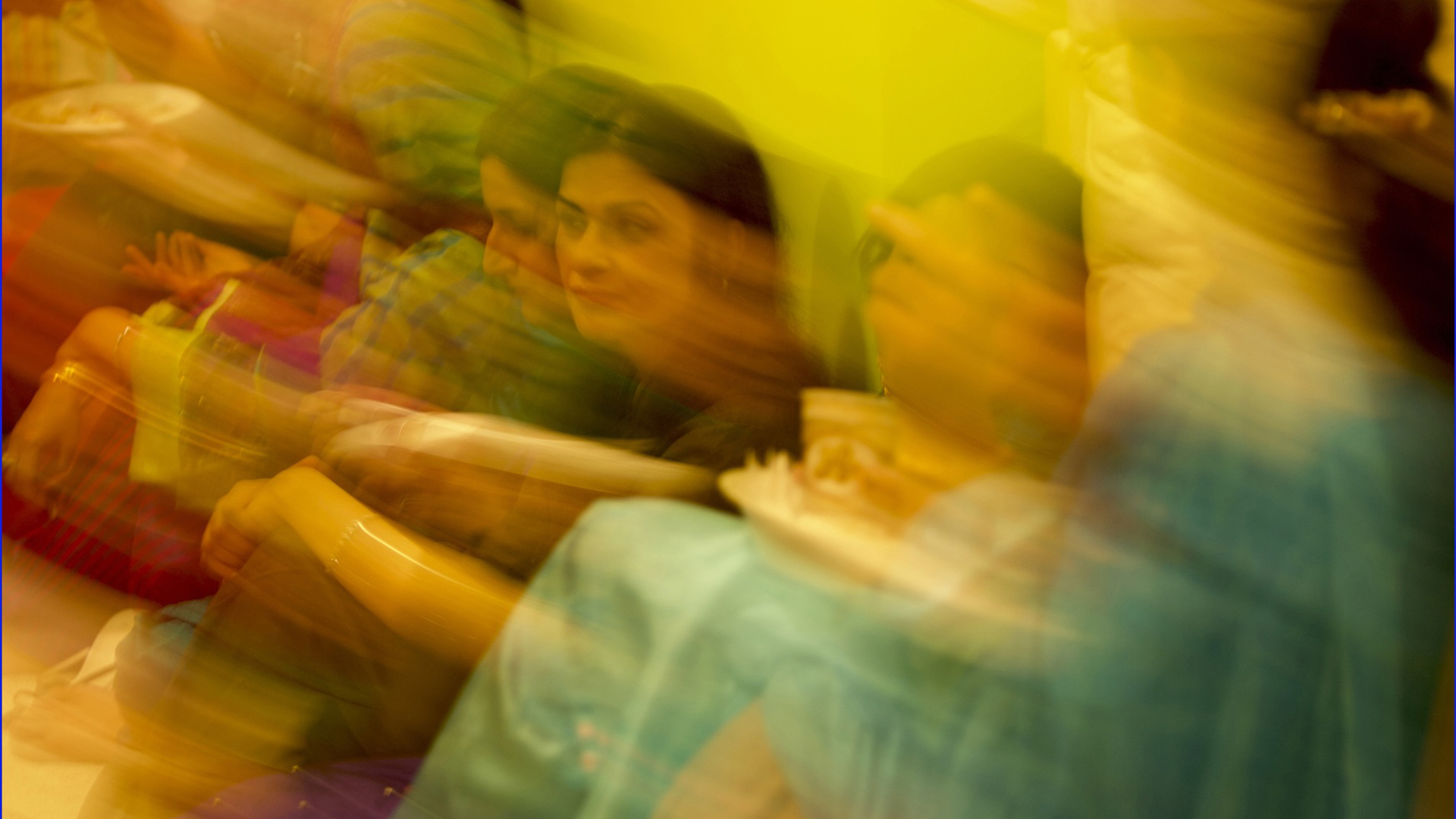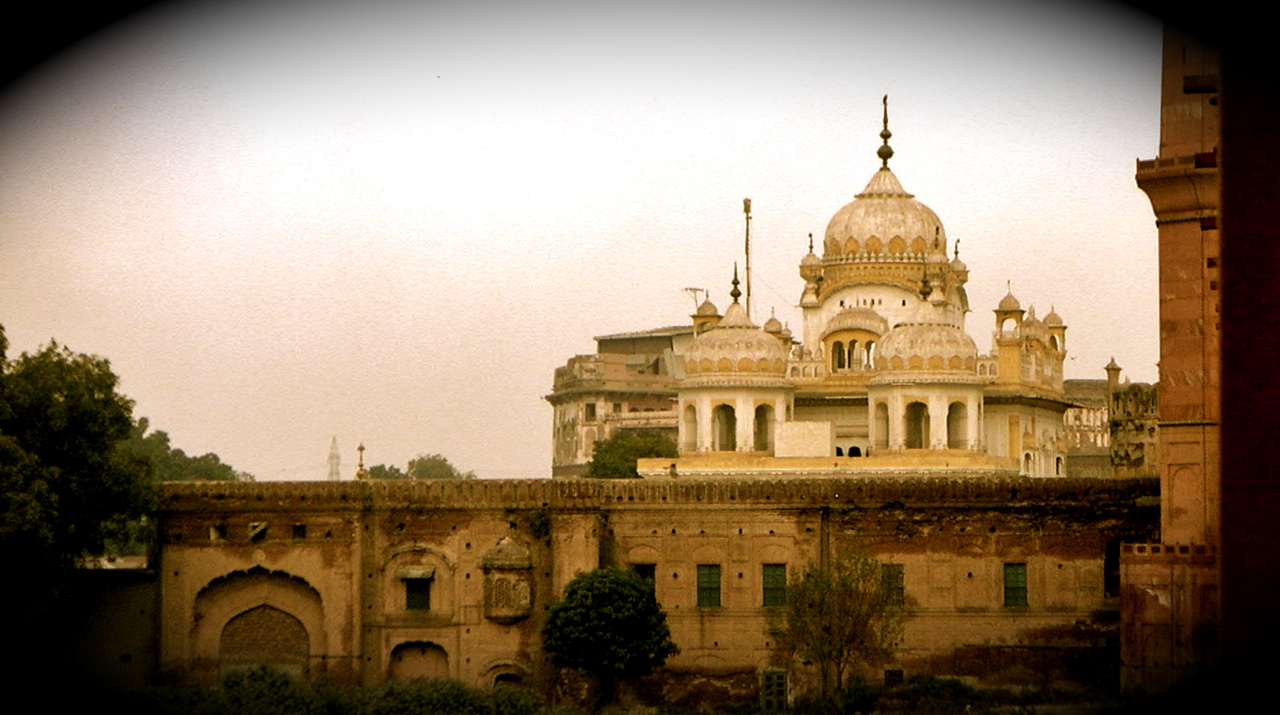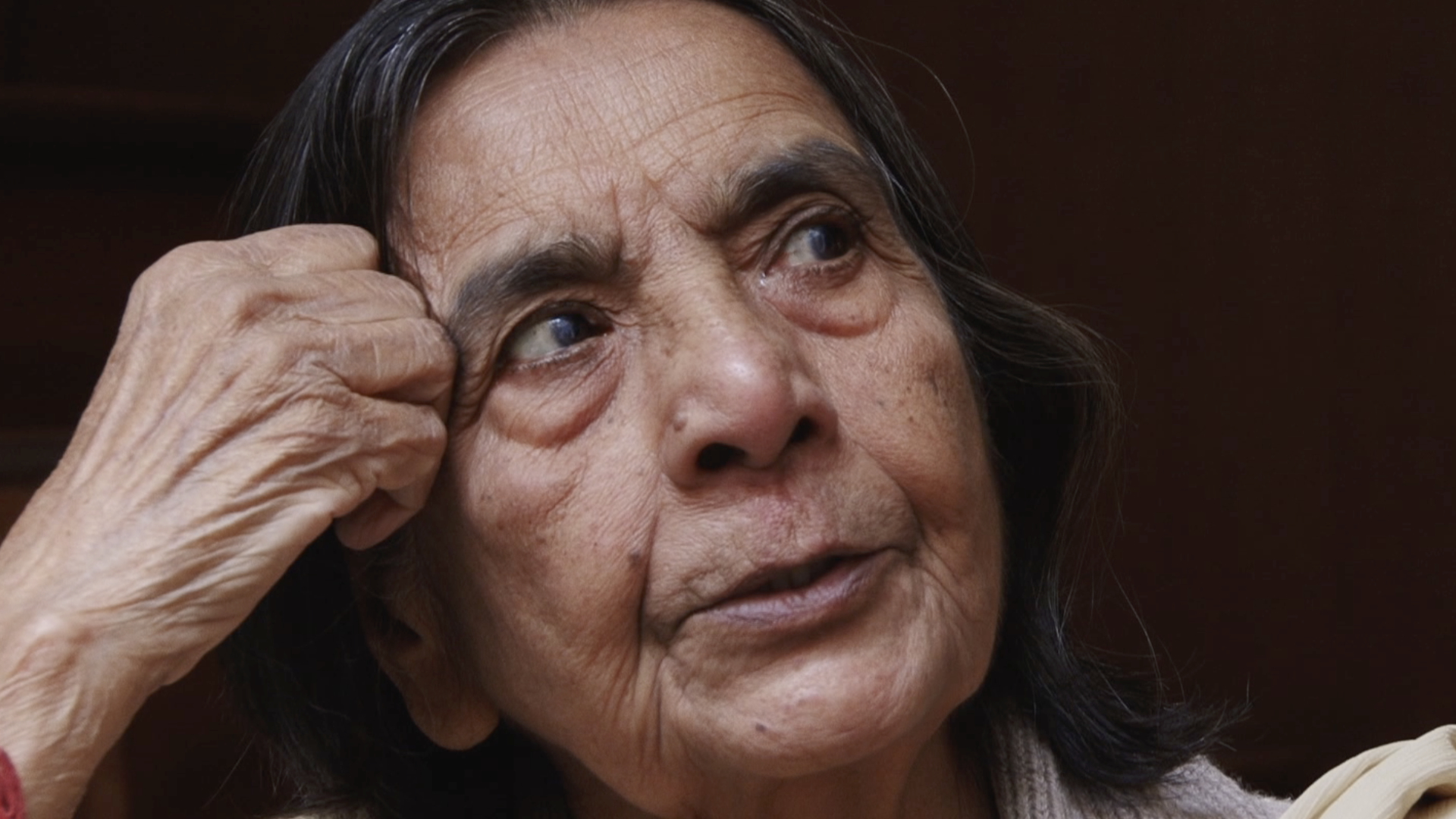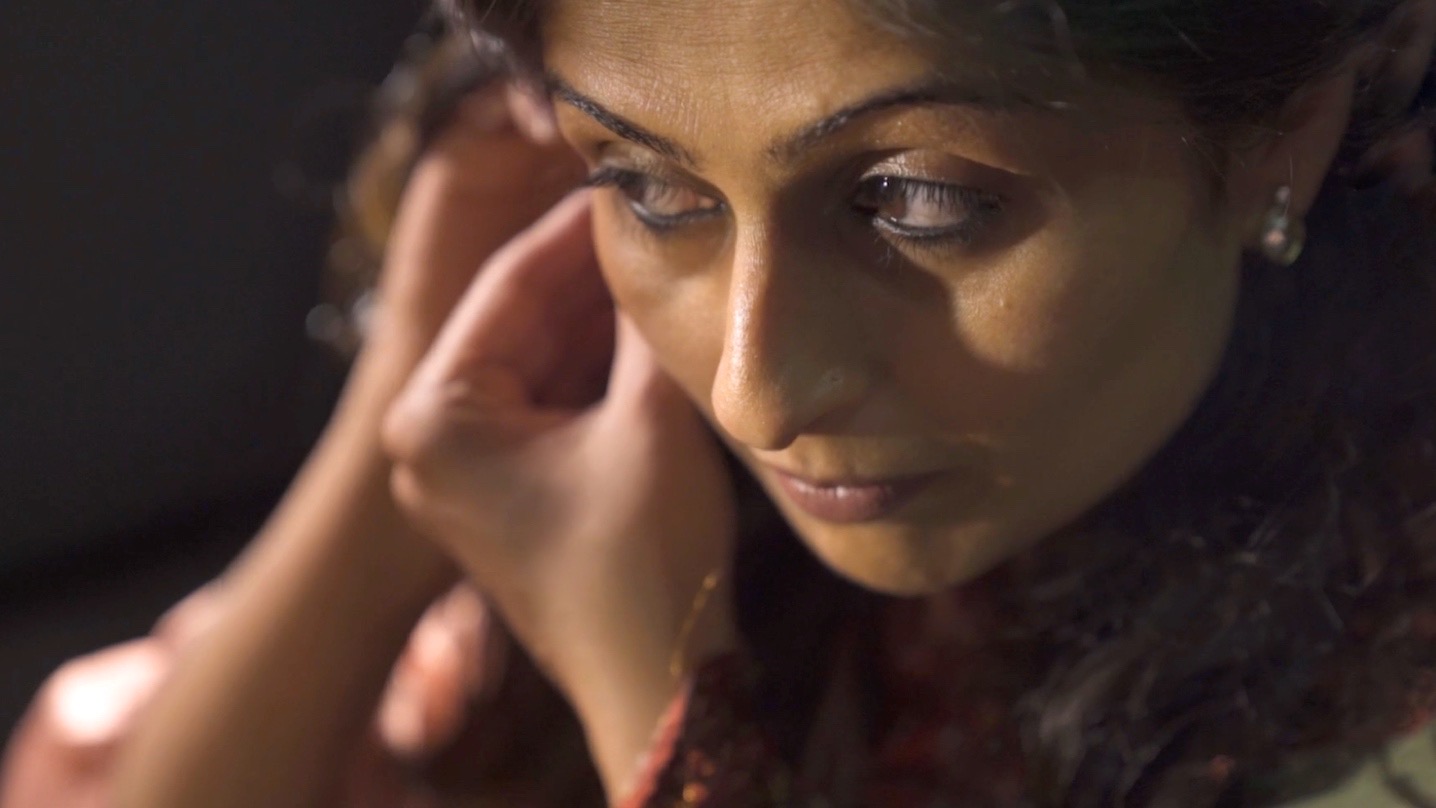But all our phrasing—race relations, racial chasm, racial justice, racial profiling, white privilege, even white supremacy—serves to obscure that racism is a visceral experience, that it dislodges brains, blocks airways, rips muscle, extracts organs, cracks bones, breaks teeth. You must never look away from this. You must always remember that the sociology, the history, the economics, the graphs, the charts, the regressions all land, with great violence, upon the body.”
–Ta-Nehisi Coates, Between the World and Me
THE INJURED BODY (2024) is a documentary film written and directed by Mara Ahmed, a Pakistani American artist and filmmaker based on Long Island, New York. It examines racism through the lens of microaggressions: slights, slips of the tongue, and offenses that accumulate over a lifetime and impede a person’s ability to function and thrive in the world. Watch official trailer here.
SYNOPSIS
The Injured Body unpacks racism through honest conversations about racial microaggressions with a diverse group of women of color involved in community work in Western New York. The film’s title is inspired by Claudia Rankine’s book, Citizen: An American Lyric, in which she asks:
How to care for the injured body,
the kind of body that can’t hold
the content it is living?
And where is the safest place when that place
must be someplace other than in the body?
Ahmed explains the need to deconstruct microaggressions:
I chose to approach racism by focusing on micro-aggressions because of two reasons. Firstly, as Claudia Rankine explains, we seem to understand structural racism somewhat, but are baffled by racism coming from friends. It is disorienting because it is unmarked. ‘The Injured Body’ hopes to home in on the language needed to ‘mark the unmarked.’ Secondly, personal stories lend themselves to filmmaking because they can help create intimacy and trust, and lay the groundwork for a paradigm shift.
The documentary spotlights the voices of women of color not only because their stories are misrepresented/dismissed by mainstream media, but also because they operate at the intersection of multiple forms of oppression and can articulate the complexity of those experiences. Their testimony and analysis can help broaden traditional understandings of feminism as well as anti-racism work. The women interviewed for the film also share their visions for a world without bigotry and violence. This is a crucial part of the film. Imagining a world without racism is an important step towards achieving it.
The film weaves together an alternative narrative strand told through dance and movement choreographed by Mariko Yamada, Rosalie “Daystar” Jones, Sraddha Prativadi and Sejal Shah. Since prejudice is largely a matter of reading bodies in particular ways, and racism is received by and carried in the body, dance is the perfect medium to underline stories shared in the film and the impact of racism on our health and well-being.
Cinematography is by Rajesh Barnabas and the film’s musical score by Thomas Davis.
The Injured Body is fiscally sponsored by NYWIFT and slated to premiere in 2023.
FILM STRUCTURE
ACT 1 – What are microaggressions: In the first part of the documentary, audiences are introduced to the 17 women of color featured in the film. We meet some of the women in private interviews, where they are situated in their own homes or places of work, and others in group discussions where the conversation is more free-flowing and interactive. The women talk about their experiences of microaggressions. They share examples that are sharply etched in their minds and explain how they react to othering – how they are able to process it and move forward.
◊
ACT 2 – Daily psychic stress and the body: The women discuss their overall understanding of the nature of racism and its root causes. They define their own identities and share what it means to live at the intersection of multiple forms of oppression and erasure. They discuss the impact of non-stop microaggressions on their bodies, mental health, and quality of life.
◊
ACT 3 – Dreams for a better world: The interviewees help us visualize a world without isms (racism, sexism, classism, ableism, heterosexism, and more). They draw a mental picture and try to articulate the changes needed in sociopolitical, cultural and economic structures in order for us to get there. Utopian imagination is an essential part of activism. It’s the first step towards developing frameworks that can translate our visions into actions. This is how we prefigure the world we want to live in.
CREATIVE TREATMENT
The film’s visual language is based on a stitching together of interviews with dances shot in outdoor spaces over time, thereby spanning Rochester’s distinct four seasons. The idea to travel seamlessly between conversations about racism and dance sequences, came from a multimedia piece I created for the Fringe Festival in 2017, in which I collaborated with Japanese American choreographer Mariko Yamada. Other Echoes established a link between oppression and breathing by using Frantz Fanon’s work. In Black Skin, White Masks, Fanon writes “we revolt because we can’t breathe” and addresses the embattled breathing of the colonized body.
In Citizen, Rankine continues this exploration:
Perhaps each sigh is drawn into existence to pull in, pull under, who knows; truth be told, you could no more control those sighs than that which brings the sighs about.
The sigh is the pathway to breath; it allows breathing. That’s just self-preservation. No one fabricates that. You sit down, you sigh. You stand up, you sigh. The sighing is a worrying exhale of an ache. You wouldn’t call it an illness; still it is not the iteration of a free being.
Breath is the gateway to expressivity in movement, hence the constant dialogue between interviews and dance choreography. They are held together with breath patterns and coalesce into a rich, multivarious, cinematic language. Dance sequences are shot outdoors, in open spaces that epitomize the beauty of nature, and mesh easily with classical music. Sky-high trees and gliding bird puppets, dancers cloaked in winter snow, fall leaves that bleed into the train of a dancer’s dress, the soothing sound of waves on a beach or bells on a Native American jingle dress – all act as buffers between difficult conversations, giving the audience time to process their thoughts and emotions.
OFFICIAL TRAILER
INTERVIEWEES AND DANCERS (in order of appearance in trailer)
Interviewees: Amanda Chestnut, Tonya-Noel Stevens, Greta Niu, Lauren Jimerson, a discussion between Muna Taha, Pamela Adams and Indrani Singh, Ayni Ali, Sady Fischer, Lu Highsmith, a discussion between Khadija Mehter, Luticha Doucette and Marcella Davis, a discussion between Tianna Mañon, Mercedes Phelan and Erica Bryant, Elizabeth Nicolas.
Dancers: Andrea Vazquez-Aguirre Kaufmann, Nanako Horikawa, Rosalie “Daystar” Jones, Sejal Shah, Sraddha Prativadi, Alaina Olivieri, Mariko Yamada, María José Rodríguez-Torrado, Joyce Edwards, Cloria Sutton.







One Comment
[…] about the meaning of borders and nationalism entitled The edges that blur. She is now working on The Injured Body, a documentary about racism in America that focuses exclusively on the voices of women of color. […]